Mapping the events of the past is an investigative process linking people, places, and other significant information to moments and periods in time. In an ideal climate, historians seek the truth by shining a light back across the years and show us what they see. It is a constant, continuous process that helps us understand who we are. History, like the sciences and the arts, is an indispensable and natural part of anyone’s education. It’s where children learn about traditions and cultural differences and gain an understanding of why our world is how it is, what their place in it is, and where they want to go.
Popplet has features that make it especially helpful in the History classroom. The addition of text, images, and video; connections and color coding; collaboration and presentation features; all combine to make Popplet a first rate tool for recording and presenting historical facts. We have put together a few examples from History educators and students that demonstrate how they are finding Popplet useful in their classrooms.
The Early Years: Kindergarten and First Grade
Wanting to know about the past is instinctive, so K1 educators get out in front of it. Early history lessons are often about teaching youngsters the difference between the past and the present and introducing them to significant historical figures. That’s what Rowdy First Grade teacher, Jennifer Tice has done with her budding novice first-grade historians by using the drawing tool on Popplet Lite. Here we have President Abraham Lincoln – “too cute”, says Jennifer. We concur:

What Have The Romans Ever Done For Us?
The history of people is packed with groups and cultures whose impact has been so enormous that their influence is still felt today. The ancient Romans were certainly one such group. Year 4 students from Lanchester Endowed Parochial Primary School, in Durham, England know this only too well. Their teacher Mr. Mordue recently shared some of their hard work on Twitter:
One of our completed 'Romans' mind maps from earlier today using the excellent @poppletny app in Y4.
Mr Mordue pic.twitter.com/EZr1fCoyh2— Lanchester EP (@LanchesterEP) March 27, 2017
Did you know that towns with the suffix “chester” as in Lanchester were once Roman forts?
Vive la liberté: The French Revolution
Times of great public dissatisfaction and unrest are usually the hallmarks of revolution. “Enough is enough!”, the people say. And that’s precisely what the people of France said in 1788 after becoming tired of existing in abject poverty and frequently starving to death, while the country’s elite lived lavishly – allegedly eating cake! Historians know there’s a lot to be learned from studying times like these, so that’s why history teachers like Andrea Daugherty have students create fact-filled Popplets like this one:
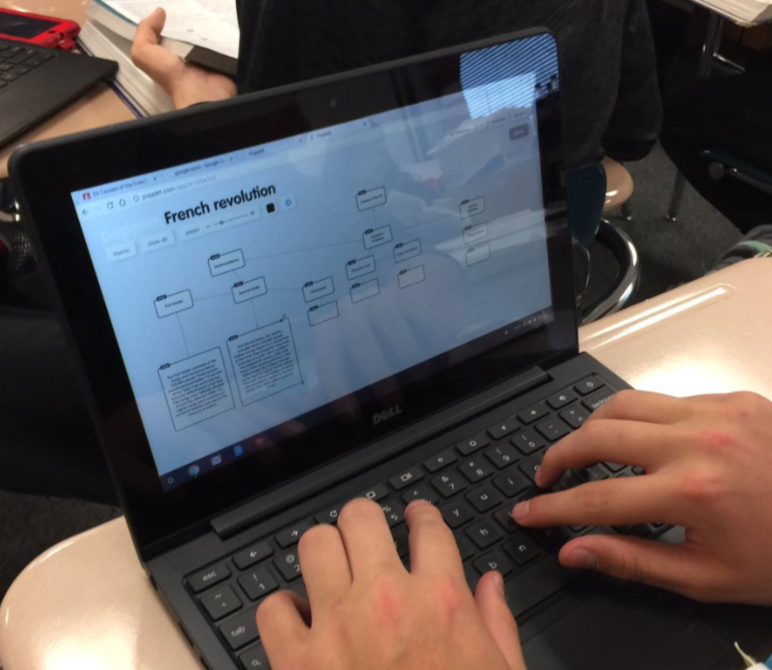
What Is History?
A very good question! One of those disarming questions sure to set the neurons racing. One of those questions we may think we know the answer to, but as we search, our minds open a little more. A very good way to get students thinking at the beginning of a history course – brainstorming the big, big questions. With Popplet the students can capture and share their ideas, which is what teacher Emily Diotte has done with her learners:
Using @poppletny in 5P to share our thoughts on "History". @MrsAwender @GlenwoodGriffin pic.twitter.com/93gdzn6fYT
— Emily Diotte (@DiotteEmily) April 27, 2017
The following Popplet is from Emily’s student Leon, but there are more examples on her Twitter feed – they are all great. Most are from students working in pairs, collaborating on the same Popplet:
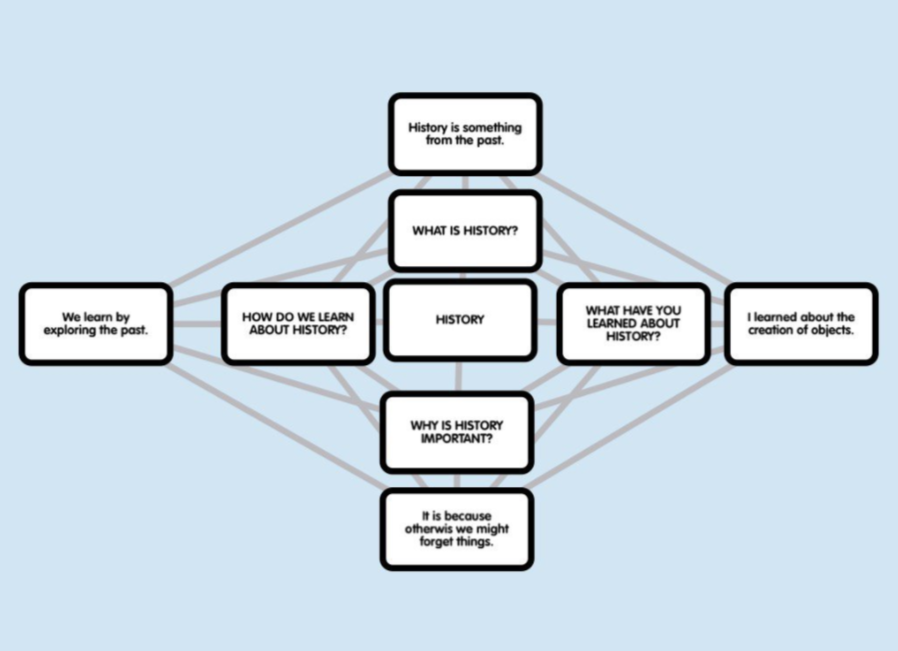
History In The Making: The American Civil Rights Movement
History isn’t always something that happened a long time ago – what happened yesterday is already history, history is being made every day. There are a great many struggles going on right now, all over the world for equal rights. Visualizing the recent past helps us better understand how it impacts on our present and can lead to an end of suffering and conflict sooner rather than later:
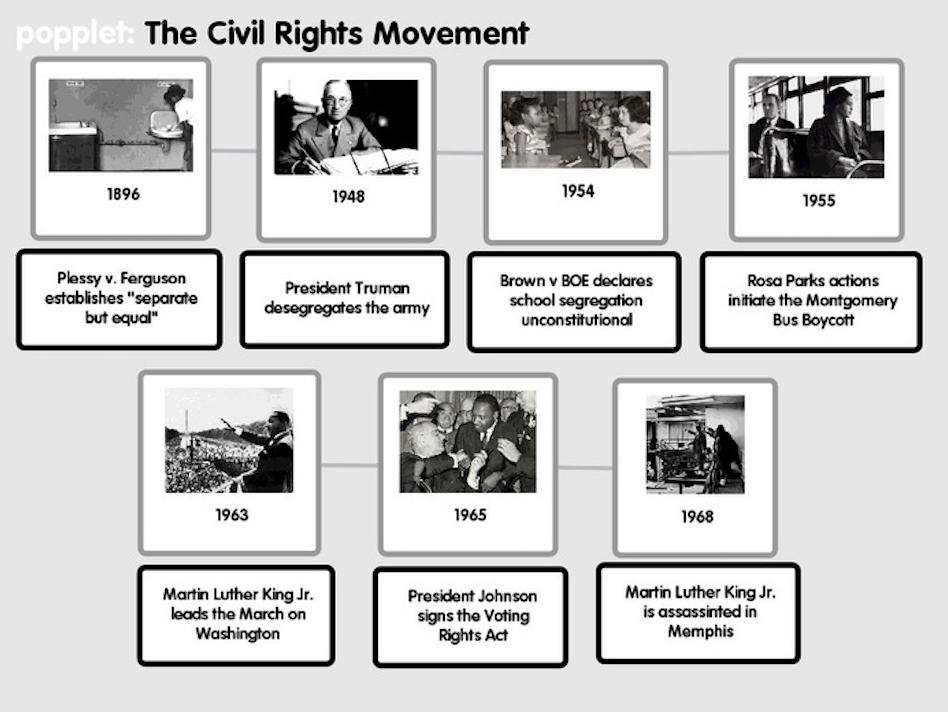
The Ubiquitous President Lincoln
Simplicity and intuitiveness are Popplet’s strengths. Knowing only a little, or nothing at all about the app or the subject matter, students can quickly learn about both in minutes. Take this activity from History Teacher, Mrs. Slaverio, where students were asked to add an image of Abraham Lincoln (the 16th President of the United States) to a popplet then add more information:
https://twitter.com/MrsSlaviero/status/859839640139964428
Students can then share and compare their popplets with their teacher and classmates:
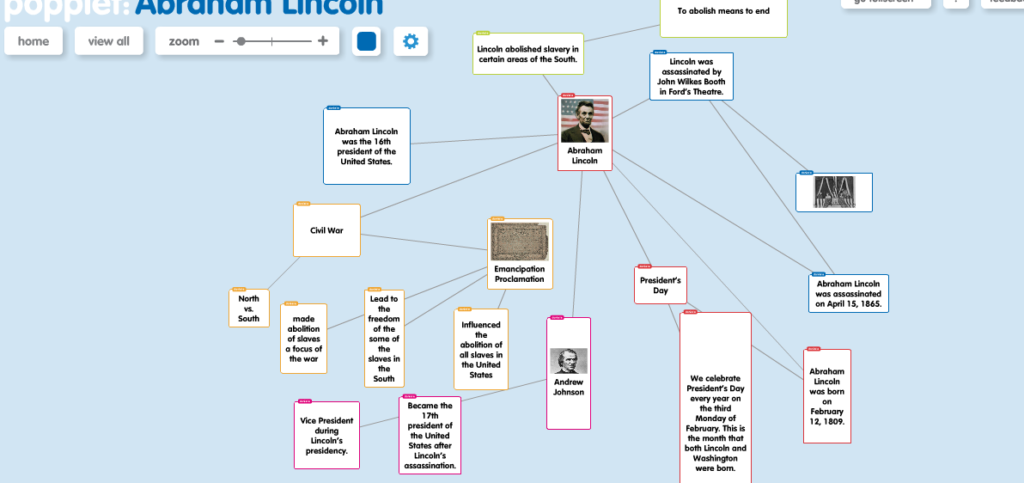
World War II and Adolf Hitler’s Influence
Not all past leaders did great things. In fact, history remembers the terrible as well as the good. Adolf Hitler wasn’t the first person whose actions inflicted immense damage on humanity, and regrettably, he will not be the last, but understanding the man might help future generations prevent others like him from doing the same. Second-grade teacher Melissa Hayes shared Logan’s WWII & Adolf Hitler’s Influence genius hour project on Twitter:
Amazing job Logan on @geniushour project about WWII & Adolf Hitler's influence! Even created a trivia game for us to play! @poppletny #wow pic.twitter.com/vtqj1AjzPh
— Melisa Hayes (@hayes_melisa) May 16, 2017

Timelines: Personal – Differentiating the Past from the Present
K3 History lessons put much emphasis on a student’s ability to differentiate the past from the present. One way of achieving this is to have learners create their own personal timelines. It could focus on past and present events, and it might even contain future event as in this example from Gracie:
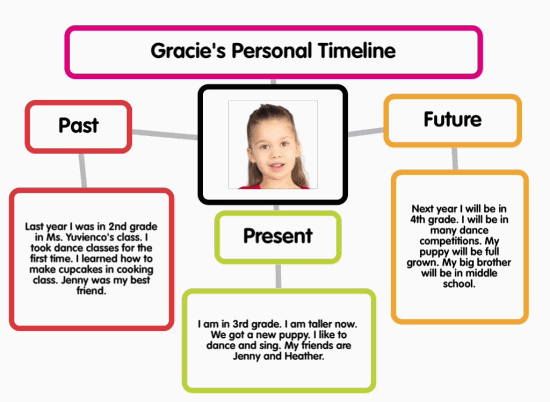
The complete lesson plan can be downloaded from K5 Computer Lab.
Timelines: Important Events in History
People, places and moments in time are important. History however also concerns itself with longer periods of time. For this, historians, like all good detectives, create timelines as a way of visualizing causes, effects, and consequences. Popplet is perfect for creating timelines! Check this out this 1970’s timeline from Technology Integrator, Jacqueline Firster:
Create a Student Blog
History is definitely one of those subjects that students love to blog about, and it’s easy for them to add active popplets to their History Blogs. All they need to do is to copy and paste the popplet’s embed code. Bloggers can add popplets that they create, or they can search for a popplet that meets their needs. The image below, which as well as being detailed and factually sound, is a good example of how to use colors to organize information on a popplet. Russian Revolutions is just one of many fine study articles to be found on Tori Taormina’s World Culture Page – about as good an example of a study blog you are ever likely to see.

Popplet Lesson Plans: Napoleon Bonaparte
Popplet is so popular with History teachers, that they often share their lesson plans: a quick google search will reveal more than a few. Here’s one from Educade, created by Augustin Molfino. Actually, it’s two lessons plans in one since it also features a certain US President, as well as the infamous French general turned Emperor.
Every era has been defined by its tumultuous events. These arouse fascination, legend and in some cases even superstition and obsession. Studying History encourages students to think critically, and teaches them the pitfalls and dangers of not separating fact from fiction – a much-needed skill these days. Creating popplets in the history class is a great way to engage learners in this important subject.
Have you been using Popplet in your History classes? If you have, we’d really like to hear from you. You can share with the Popplet community on our Twitter and Facebook page. If you’re looking for a popplet on a particular subject, check out Public Popplets.
Popplet is available on the web, and as an app for the iPad and iPhone. New web users will receive ten popplet boards when they sign up for a free account. Be sure to check out Popplet’s reduced rates for School and Class group subscriptions.